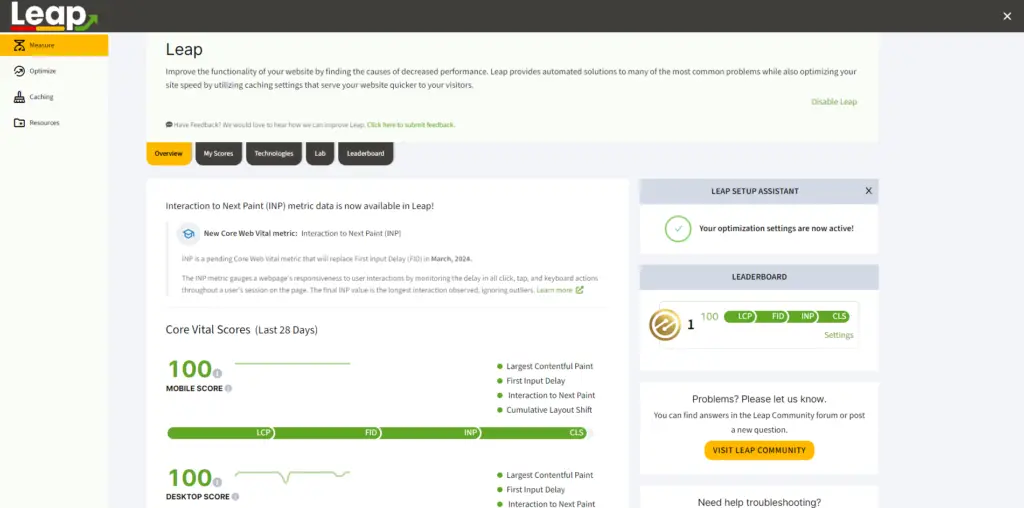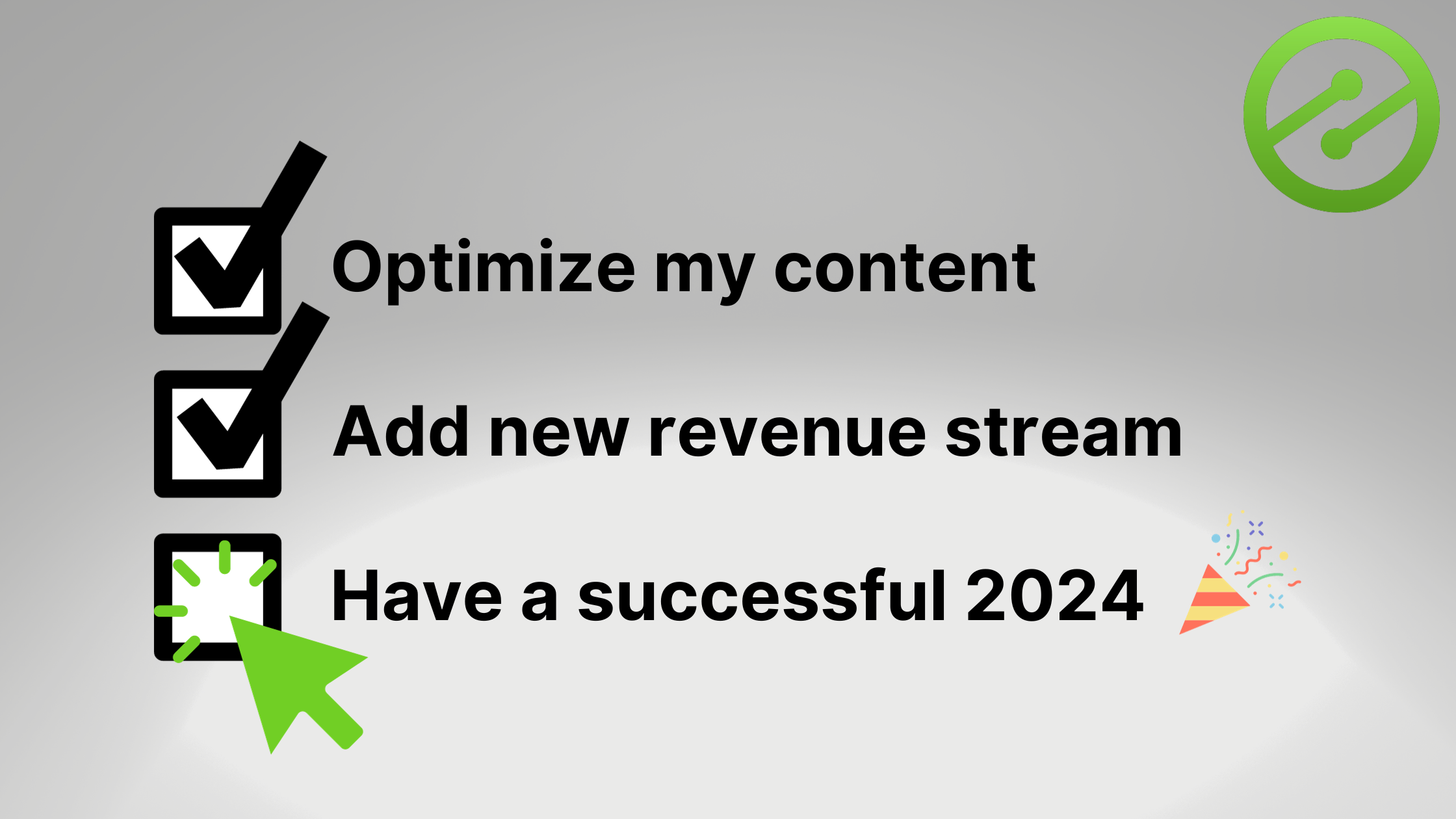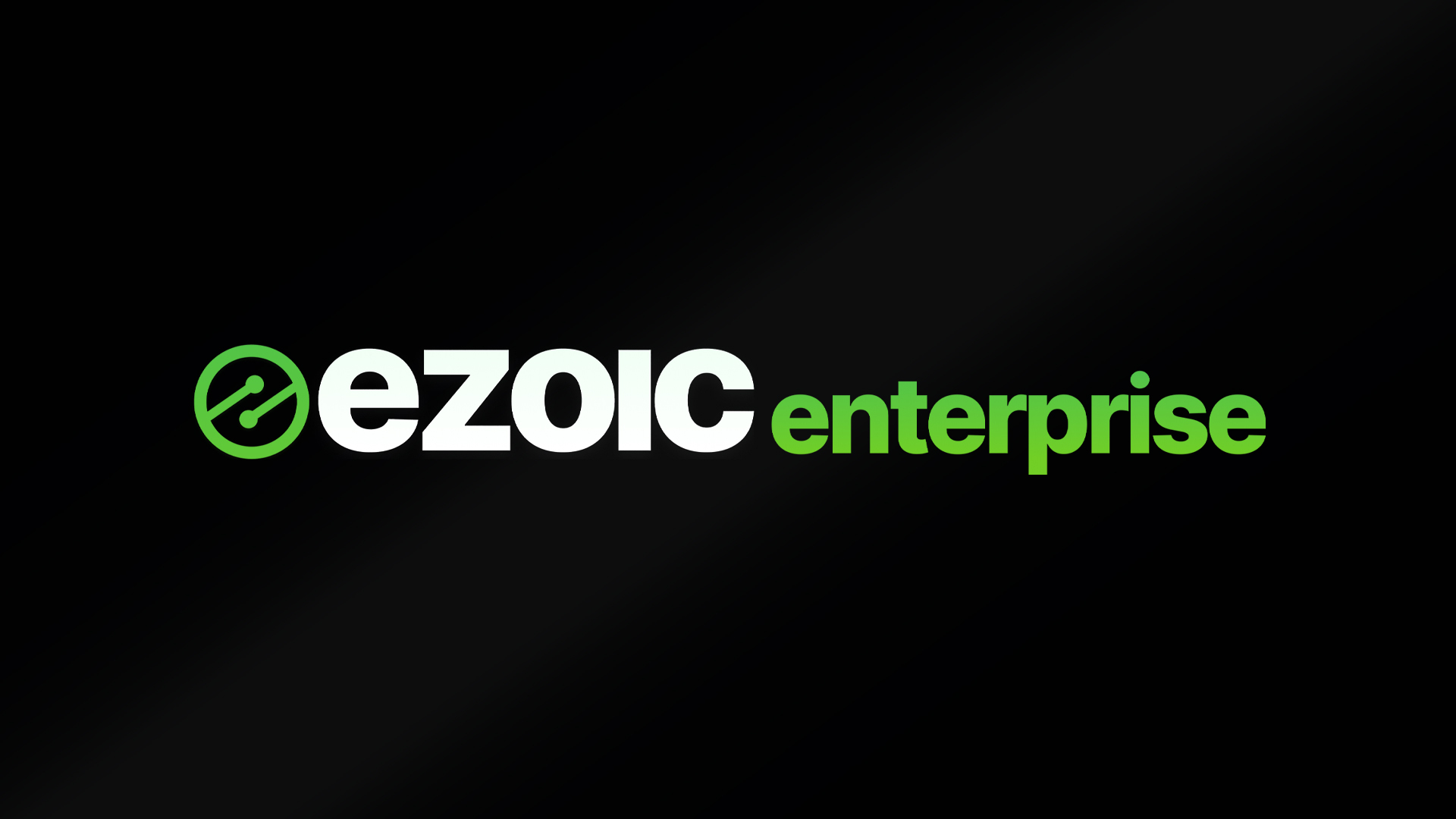Here we are at the end of another year. For many, this is the time of year where we start to think about how we approach the new year. Resolutions, plans, and strategies for how we hope to achieve the goals we have set for ourselves and our businesses. In the world of digital publishing, the environment is always rapidly changing: how sites are measured and perform, how they rank, and how they stay relevant. This year was no exception.
In 2023, we saw AI impact the digital publishing landscape like never before. In our most recent episode of The Publisher Lab, Ezoic CEO Dwayne Lafleur and CMO Tyler Bishop discuss the future of digital publishing and their insights on how this new emergence of AI may impact the industry moving forward. If you haven’t seen it, you can find it here.
Ezoic is always looking to help publishers move forward with their publishing journey by implementing tools and strategies that help you find success. This blog aims to help you navigate and consider some options that will not only help you find success faster but also amplify the results. One of the biggest benefits of Ezoic, in my experience, is the level of control you have over how you go about achieving your goals and using our tools. We always recommend and help implement the options we know will help you succeed. Whether this be through automation or the support from our amazing Publisher Success team, Ezoic is there for you or you can take full control of your setup any time you please.
Consider the following a checklist for success in 2024. You can implement some of the below in many ways from many different tools across the publishing landscape, but with Ezoic, you can find everything you need in one place.
Pagespeed and User Experience
The never-ending battle for publishers is to ensure their users get the best experience when visiting their websites. Google is on a mission to ensure you never stop focusing on this, including implementing a new core web vital, Interaction to Next Paint (INP), that will go live in March of 2024. INP will replace First Input Delay (FID). INP provides a more comprehensive look at user interaction as it observes all user interactions on the page, not just the first one while accounting for event handling and rendering delays that occur while users try and interact with your pages.

Ezoic launched Leap as a way for publishers to constantly monitor their page speed health and stay ahead of Core Web Vitals by optimizing their pages for the best user experience. The Leap team at Ezoic is continually ensuring publishers stay ahead and has already begun to adjust Leap’s toolset to assist publishers with INP. Currently finishing a final round of testing, Leap will replace FID with INP to ensure publishers are well prepared to address this new metric before Google rolls it out in March.
To ensure you are ready for the update, combining Leap and Ezoic Cloud integration allows you to improve website performance unlike any other tool, providing insights into how the technologies you are using on your site are impacting your site’s UX. Not only that, it allows you to implement ads without slowing down your pages.
If you have yet to become an Ezoic publisher and are curious to see how Leap can help you, check out the new Site Speed Library from Leap. The Site Speed Library is a free database of tech, plugins, and themes ranked by their real-world impact on Core Web Vitals. Like Leap, Ezoic provides this tool for free to any publisher curious about how they can speed up their site and provide a better experience to their users. Ezoic publishers get even more functionality from Leap with optimization tools, analytics, and recommendations, both saving time and money so you can spend more time focusing on your site’s strategy and content, instead of fixing troublesome speed issues.
If you are looking to speed up your pages and have yet to start using Leap, you can get started here.
SEO Optimization and Site Health
As you enter into the new year and have performed your overall assessment of your site performance, it’s time to look at how you can improve your existing content that has been performing well, but also how to prepare your strategy through the year with the new content you create.
A tried and true method for site success every year is optimizing and updating your old content. Keeping content that performs well up to date and relevant can be an untapped resource for many publishers. While it’s important to continue to craft new content that is relevant to your target audience and niche, using tools such as NicheIQ can help you perform keyword research as well as update relevant content to help your site continue to thrive.
Page Booster is a feature available to all Ezoic publishers within NicheIQ and can make this process painless. Page Booster looks at your pages that are losing momentum and finds keywords to enhance the article so it can begin to regain lost traffic and position in search results. You can do this on your own using Big Data Analytics or Google Analytics, but Page Booster can handle this time-consuming task for you and track all pages on the site to determine if they are trending up, down, or have remained stable.
The Website Staff Stack
New content is still the best resource for keeping a site relevant and thriving. Publishers today, especially those using Ezoic, have an advantage that others don’t. You may have heard Tyler Bishop, Ezoic CMO, mention a recent strategy that can make the task of creating new content easier than ever before by implementing the Website Staff Stack. If you were unable to catch the webinar live during customer week 2023, you can watch the VOD here to see how you can use this stack to empower your content strategy.
The Website Staff Stack is a combination of NicheIQ, Writio and Big Data Analytics. We’ve already covered part of how NicheIQ can assist you with updating old content, but there is an entire SEO team at your fingertips within NicheIQ’s suite of tools and features. The Topics app is a perfect place to get started when looking at what you should consider writing about that will perform well with your audience. This is an excellent starting point to then begin crafting an article using Wordsmith. Wordsmith is your hands-on AI writing assistant that keeps you in control of your content narrative and voice. You can read more about it here or get started right away from the NicheIQ dashboard.
If you are looking for an even more hands-off approach, consider trying out Writio. Writo provides a fully automated approach to content creation. From diversified writers, writing voices, and topics, Writio can handle the heavy lifting of a fully dedicated writing team all with the click of a button. Writio also integrates with NicheIQ to enhance its already robust SEO capabilities.
You can sign up for a free 7-day trial of Writio here.
The Power of Analytics
The third part of the Website Staff Stack is Big Data Analytics. Publishers that have been with Ezoic for a long time should be no stranger to the power of Big Data Analytics and what it offers compared to analytics platforms that rely on snippets added to your pages. Frustrated by all the functionality you lost in Google Analytics with its most recent update to GA4? Publishers using Big Data Analytics didn’t lose anything. In fact, Big Data Analytics has only continued to grow in the preset reports it holds and the finite level you are able to drill down into your pages to gain insights into how your site has been performing.
Big Data Analytics provides an in-depth look at your site performance from all angles. Video, ad performance, SEO, and more can be found in convenient reports that allow you to compare your selected date ranges to make the most informed decisions around your new year strategy. Cloud integration through Ezoic allows you to capture insights and data unlike other platforms including providing insights to real-time revenue and analytics being generated on your pages and your users.
Measuring your site performance should be a part of your plan regardless of whether or not you choose to implement the Website Staff Stack on your site. If you are unfamiliar with Big Data Analytics you can use this helpful guide to familiarize yourself or head into your dashboard to start measuring now.
The Turbo Stack
Just running display ads is a thing of the past. Publishers that are finding the highest levels of success in terms of revenue generation are differentiating their content with other sources. The frontrunner here is implementing video on your pages. Video has remained on a consistent growth path in terms of driving traffic and success for websites and shows no signs of slowing down. A recent study from HubSpot has shown that visitors are 52% more likely to share video content than any other type of media. Video continues to fast-forward publisher growth for those that choose to implement it, and Ezoic has two products that can help you implement this lucrative and beneficial content type in less time than it will take you to read this article.
The Turbo Stack is a combination of three Ezoic products: Humix, Flickify, and Big Data Analytics. If you want to see the recent results of how video can impact EPMV and revenue in a short period of time, we have that covered here.
The Humix Network
The first item in the Turbo Stack is Humix. Humix is a video network and suite of tools that allows publishers to implement video instantly. Whether you have your own video content or not, you can get video on your pages with the flip of a switch. Humix uses AI to intelligently match content from the video network to the content on your pages if you don’t have any of your own. If you do have your own video content, you can simply import that content from YouTube or upload it directly to begin earning with Humix.
The best part about Humix is you don’t have to exclusively use Humix to monetize your video content. Again, Ezoic wants to see publishers generate and see the highest levels of success, so the recommendation here would be to load your videos to Humix and YouTube if you have your own content. A powerhouse available through Humix is the Universal Player that is used to display and monetize your video content. The Universal Player is an intelligent player that can manage in-stream, outstream, and floating video unlike any other player.
You can read more about the Universal Player here or head to your dashboard to start using it within Humix.
Create Video in a Flash
For those that have no video, but want to create videos relevant to their content you can lean on Flickify. Flickify allows you to paste an article from your site into its dashboard and generate a relevant video that supports the content on your page. The results are truly amazing and the Flickify team continues to implement new and exciting features to further refine the video content you create. You can quickly add music, narration, and images to your videos and get them serving on your pages using Humix.
If you want to quickly get started with Humix and Flickify you can use this handy guide as a reference or simply login to your dashboard to get started.
Take Action
Implementing any of the stacks I have broken down in this article will help you get started on the right foot in the new year and embolden any strategy to see success in 2024. I hope you and yours have had a great end to your 2023 and have a prosperous start to your new year!
Checklists for Success
The Website Staff Stack has you covered with SEO, Content Creation, and Site health.
Here’s your quick access checklist to get started with implementing the Website Staff Stack.
- Optimize your older content using Page booster
- Generate new ideas for Topics
- Create new Content
- Wordsmith – Your AI assistant editor
- Writio – Your automated writing staff
- Measure site performance using Big Data Analytics
The Turbo Stack will open the most in demand content source for publishers by implementing and creating video with the push of a button.
- Share or add videos from Humix to your pages
- Create videos from your content using Flickify
- Turn on the Universal Player




